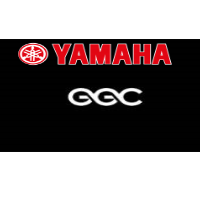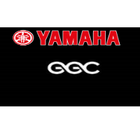From Music to Motorcycles; A Brief History Lesson on Yamaha
The Yamaha brand is over a century old; its history is filled with elements of perseverance, versatility and innovation.
IT ALL STARTED WITH MR. TORAKUSU YAMAHA
Yamaha's history began when its founder, Torakusu Yamaha, repaired a broken reed organ in 1887.
 Mr. Torakusu Yamaha was captivated by Western science and technology from early on in his life. Fascinated by the watches that were gaining popularity in Osaka, Japan at the time, he took up watchmaking, studying business along the way. Over time, Torakusu began repairing medical equipment. On one occasion, the principal of an elementary school asked him if he would try to repair a reed organ. He agreed and was able to repair it successfully, marking the first step toward the birth of the Yamaha brand.
Mr. Torakusu Yamaha was captivated by Western science and technology from early on in his life. Fascinated by the watches that were gaining popularity in Osaka, Japan at the time, he took up watchmaking, studying business along the way. Over time, Torakusu began repairing medical equipment. On one occasion, the principal of an elementary school asked him if he would try to repair a reed organ. He agreed and was able to repair it successfully, marking the first step toward the birth of the Yamaha brand.
Recognizing its business potential, while repairing the organ, Torakusu created a blueprint for the inside of the organ, later creating his own prototype organ. The organ, however, was criticized harshly for its poor tuning. Undaunted, and starting from zero, Torakusu began studying music theory and tuning. After four months of seemingly endless struggles from early morning to late at night, he was finally able to complete the organ. This was the first reed organ to be built in Japan.
blueprint for the inside of the organ, later creating his own prototype organ. The organ, however, was criticized harshly for its poor tuning. Undaunted, and starting from zero, Torakusu began studying music theory and tuning. After four months of seemingly endless struggles from early morning to late at night, he was finally able to complete the organ. This was the first reed organ to be built in Japan.
THE YAMAHA LOGO IS MADE UP OF THREE TUNING FORKS
It is easy to see how Mr. Torakusu Yamaha came up with the concept of the tuning fork mark, inspired by the difficult experience of studying tuning while holding a tuning fork in his hand.
 See the three tuning forks in the Yamaha Motor logo
See the three tuning forks in the Yamaha Motor logo
YAMAHA STARTED MAKING MOTORCYCLES AFTER WORLD WAR II In 1950, Genichi Kawakami became Yamaha Corporation's (then Nippon Gakki Co. Ltd's) fourth president at 38 years old. Kawakami brought new wind to the company's sails with his creative approach to management, strengthening and reorganizing the company's corporate structure, improving the efficiency and productivity of the production lines, and more. Under his leadership, Yamaha Corporation became the world's leading piano manufacturer in terms of volume.
In 1950, Genichi Kawakami became Yamaha Corporation's (then Nippon Gakki Co. Ltd's) fourth president at 38 years old. Kawakami brought new wind to the company's sails with his creative approach to management, strengthening and reorganizing the company's corporate structure, improving the efficiency and productivity of the production lines, and more. Under his leadership, Yamaha Corporation became the world's leading piano manufacturer in terms of volume.
During World War II, Yamaha Corporation manufactured wooden and metal propellers for airplanes, and had also built an engine to test them. The company also had its casting technology for making piano frames.
On November 7, 1953, Kawakami, issued a highly confidential directive to the members of management to begin building a prototype motorcycle engine. At the time, the company had no experience manufacturing motorcycle engines, but the company did have the technical resources to do so.
Kawakami's order to produce a prototype motorcycle engine was the result of both his foresight and his objectives. He wanted to utilize the company's available technological assets, find a use for the company's machinery for making propellers that had been sitting dormant since the end of the war, and to further grow the business by manufacturing products other than musical instruments.
YAMAHA'S FIRST MOTORCYCLE WAS MADE IN 1955; IT WAS A COMPETITIVE AND COMMERCIAL SUCCESS
 Yamaha's first motorcycle: The YA-1, nicknamed the Akatombo (The Red Dragonfly)
Yamaha's first motorcycle: The YA-1, nicknamed the Akatombo (The Red Dragonfly)
By 1954, work on the first prototype motorcycle was underway. Having to start from zero made it a very challenging project. The company's first motorcycle was the YA-1 Motorcycle (125cc, 2-stroke, single-cylinder, street bike); it was nicknamed "Akatombo" (The Red Dragonfly). It was completed and shipped on February 11th, 1955; it was produced and sold in Japan. The brand new YA-1 won the first two races it entered that year.
At a time when the starting monthly salary for a male college graduate was about 10,000 yen, the YA-1's price tag was a whopping 138,000 yen. For a late-arriving manufacturer, sales were hard to come by at first. But a combination of things like the YA-1's attractive design, quick engine starts and racing successes proving its performance bore fruit, and the greater brand recognition that followed eventually led to steady sales and production.

In 1955, the success of the YA-1 resulted in the founding of Yamaha Motor Company Ltd., splitting the motorcycle division from the Yamaha Corporation (however the Yamaha Corporation is still its largest shareholder).
TODAY, YAMAHA MOTOR COMPANY LTD IS A HIGHLY DIVERSIFIED COMPANY
Yamaha Motor Company Ltd now produces products for a large number of industries and consumer segments including:
- Motorcycles
- Commuter vehicles such as scooters
- Recreational vehicles; all terrain vehicles and snowmobiles
- Boats
- Marine engines
- Personal watercraft
- Electric bicycles
- Automobile engines
- Industrial-use unmanned helicopters
- Golf cars
- Power products: generators, multipurpose engines, water pumps and snow throwers
- Swimming pools, watersliders and pool-related equipment
- Intelligent machinery, including compact industrial robots
- Electric wheelchairs and wheelchair electric drive units
- Yamaha parts and accessories, apparel, cycle helmets and motor oil
- Industrial robots and surface mounters


The. Guitar is. The G100a. In. Mint shape. And. 54yrs.old. Amazing.
I have a. 1967. Classical Nippon gakki guitar made at the Hamamatsu facility. Its in amazing shape and sounds amazing holds it tune indefinitely and the notes resonate like a old bottle of wine better with age
I. Luv Torokusu. Yamahaha. Revs. My. Heart
Leave a comment